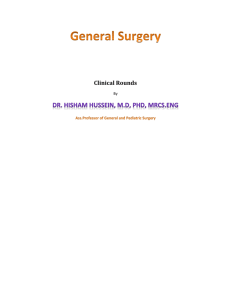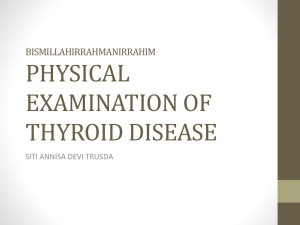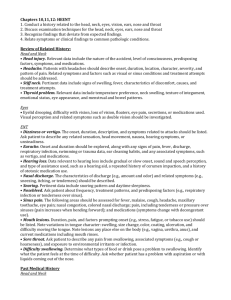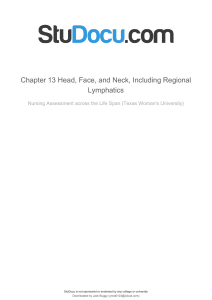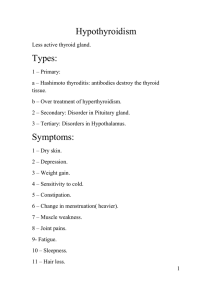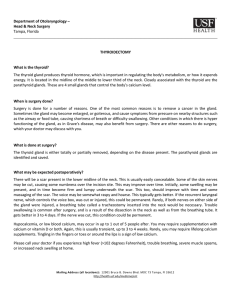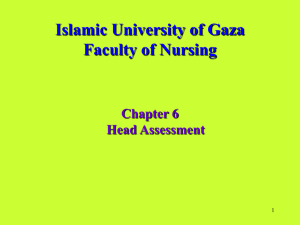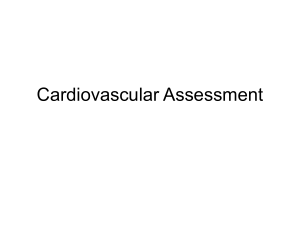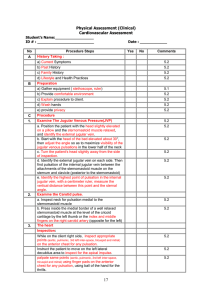6Head and neck assessment (Neck and Thyroid)
advertisement
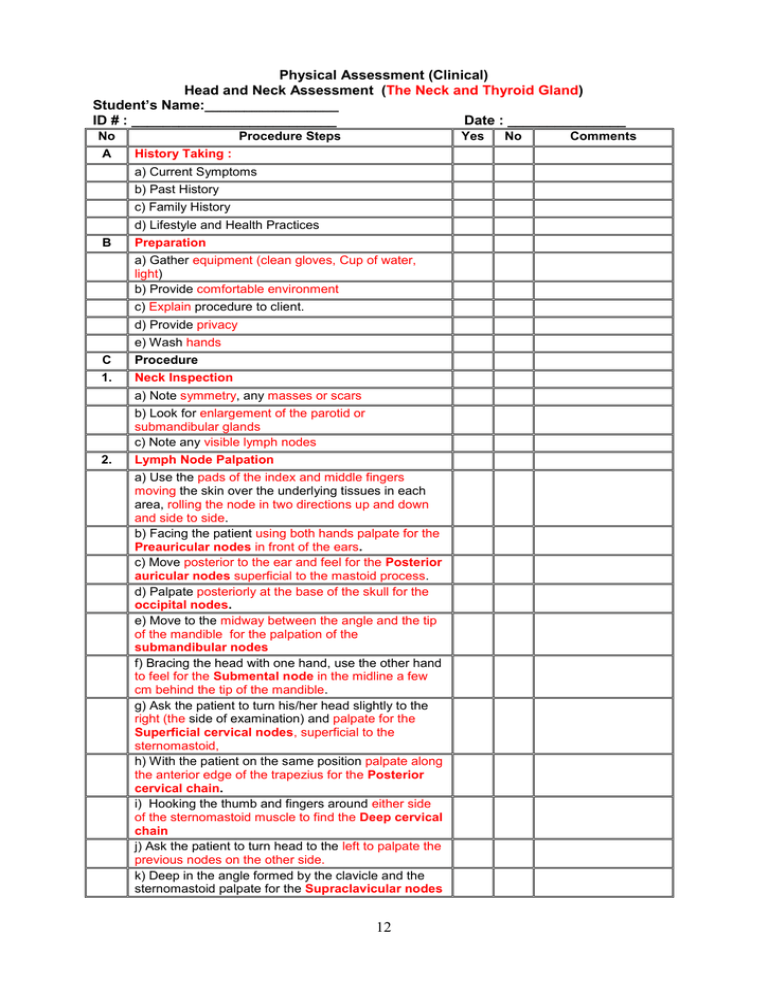
Physical Assessment (Clinical) Head and Neck Assessment (The Neck and Thyroid Gland) Student’s Name:_________________ ID # : __________________________ Date : _______________ No A Procedure Steps Yes History Taking : a) Current Symptoms b) Past History c) Family History B d) Lifestyle and Health Practices Preparation a) Gather equipment (clean gloves, Cup of water, light) b) Provide comfortable environment c) Explain procedure to client. d) Provide privacy C e) Wash hands Procedure 1. Neck Inspection a) Note symmetry, any masses or scars 2. b) Look for enlargement of the parotid or submandibular glands c) Note any visible lymph nodes Lymph Node Palpation a) Use the pads of the index and middle fingers moving the skin over the underlying tissues in each area, rolling the node in two directions up and down and side to side. b) Facing the patient using both hands palpate for the Preauricular nodes in front of the ears. c) Move posterior to the ear and feel for the Posterior auricular nodes superficial to the mastoid process. d) Palpate posteriorly at the base of the skull for the occipital nodes. e) Move to the midway between the angle and the tip of the mandible for the palpation of the submandibular nodes f) Bracing the head with one hand, use the other hand to feel for the Submental node in the midline a few cm behind the tip of the mandible. g) Ask the patient to turn his/her head slightly to the right (the side of examination) and palpate for the Superficial cervical nodes, superficial to the sternomastoid, h) With the patient on the same position palpate along the anterior edge of the trapezius for the Posterior cervical chain. i) Hooking the thumb and fingers around either side of the sternomastoid muscle to find the Deep cervical chain j) Ask the patient to turn head to the left to palpate the previous nodes on the other side. k) Deep in the angle formed by the clavicle and the sternomastoid palpate for the Supraclavicular nodes 12 No Comments No Procedure Steps Yes 3. The Trachea 4. a) Inspect the trachea for any deviation from its midline position b) Feel for any deviation Palpate sternal notch to make sure trachea is midline by palpating the tracheal ring (sternal notch midway between clavicular heads) c) place one finger along one side of the trachea and note the space between it and the sternomastoid and compare it with the other side A. The Thyroid Gland ( Anterior ) a) ask the patient to extend the neck slightly b) Using tangential lighting directed downward from the tip of the patient’s chin, inspecting the region below the cricoid cartilage for the gland. c) Ask the patient to sip some water and to extend the neck again and swallow. Watch for upward movement of the thyroid gland noting its contour, and symmetry. B. Palpate the Thyroid Gland from behind a) Stand behind the client b) Place the fingers of both hands on the patient’s neck so that the index fingers are just below the cricoid. c) Adjust the patient’s neck extension to avoid tightened neck muscles. d) Ask the patient to sip and swallow water and feel for any glandular tissue rising under the finger pads. e) Ask the client to set up right, lower the chin and turn the head slightly to the right. f) Use the fingers of the left hand to push the trachea to the right. g) With the fingers of the right hand palpate the area between the trachea and the sternomastoid muscle. h)Palpate with and without swallowing D i) Reverse the technique to palpate the left lobe of the thyroid. j) If the thyroid gland is enlarged listen over the lateral lobes with a stethoscope to detect a bruit) Procedure Termination a) Put client in comfortable position according to health status b) Provide patient with reassurance c) Return back equipments d) Wash hands 13 No Comments
